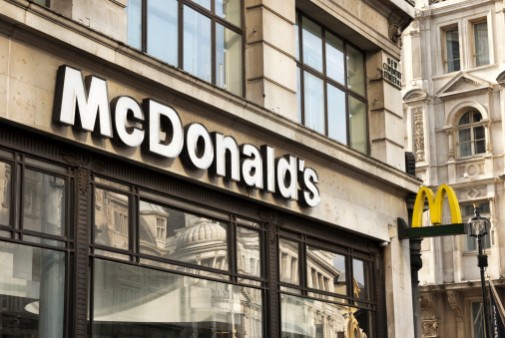Physicians applaud McDonald’s decision on antibiotics

Last week, the Golden Arches shined a little brighter with McDonald’s announcement that it is committing to serving chicken free of human antibiotics at its 14,000 U.S. restaurants within the next two years.
The announcement from the world’s largest restaurant chain made big news, as science has shown that the use of antibiotics in poultry and meat sources may be leading to an increase in life-threatening drug-resistant bacteria among people all over the world. According to the U.S. Centers for Disease Control and Prevention (CDC), an estimated 2 million Americans are infected annually by antibiotic-resistant bacteria each year, with an estimated 23,000 of them dying from their illness.
These alarming numbers have caused consumers and, in turn, restaurants like McDonald’s and Chik-fil-A, as well as food suppliers like Tyson and Purdue, to phase out the use of human antibiotics in their poultry products in the interest of public health.
“Our customers want food that they feel great about eating—all the way from the farm to the restaurant—and these moves take a step toward better delivering on those expectations,” said Mike Andres, McDonald’s U.S. President, in a statement.
In addition, McDonald’s announced its U.S. restaurants also will offer customers milk options of low-fat white milk and fat-free chocolate milk from cows not treated with rbST, an artificial growth hormone.
The new direction for McDonald’s and other restaurants and food suppliers isn’t just good for business, but good for the health of a nation that readily relies on fast foot, family-friendly food sources, physicians say.
Antibiotics have, in the past, been seen as wonder drugs, killing the bacteria that lead to many infections, explains Dr. Mandavi Kulkarni, infectious disease specialist with Advocate Illinois Masonic Medical Center in Chicago. However, in recent decades, the use of antibiotics not only led to the development of more resistant strains as the targeted bacteria mutated, but has far outstripped the discovery of newer, more powerful antibiotic medications.
“Over the past several decades, food suppliers have added common human antibiotics to the feed they give to their livestock to stimulate growth and prevent disease,” Dr. Kulkarni says. “The medicine wasn’t given to only sick animals, but to full, healthy flocks and herds. This overuse has, in many scientists’ opinions, helped lead to the growing threat of drug-resistant bacteria.”
Dr. Kulkarni sees long term benefits from the move.
“This will enable more children to grow up free of the antibiotics that may now be found in some of their favorite foods,” says Dr. Kulkarni. “This, along with the judicious use of antibiotics for the treatment of illness, will lessen the possibility of illness that is resistant to modern medicine.”
What you can do now
While restaurants get ready to make the switch, there are steps you can take to make certain you’re getting meats that are free of human antibiotics, says Katie Wickman, infection preventionist at Illinois Masonic.
- Learn more! Some helpful websites are:
- Antibiotic Resistance Project, The PEW Charitable Trusts
- Meat w/out Drugs
- Antibiotic Use in Food-producing Animals, The Centers for Disease Control and Prevention
- Educate yourself on label terminology. For example, “natural” appears on many meat labels, but has nothing to do with whether or not an animal was raised without the use of human antibiotics.
- If you’re financially able, buy meat raised without antibiotics. If this seems expensive, try switching to one type of antibiotic-free item at a time.
- Ask your local grocery and favorite restaurants to offer antibiotic-free meats and frequent those that do.
- Send letters to your legislator, sign petitions and send letters to your favorite meat producer to ask them to do what they can to support antibiotic-free meat production.
Related Posts
Comments
One Comment
About the Author
health enews staff is a group of experienced writers from our Advocate Health Care and Aurora Health Care sites, which also includes freelance or intern writers.


















Know why Mc D is losing market share in US ? Same old taste . Culvers has Better food Varied menu Good value.